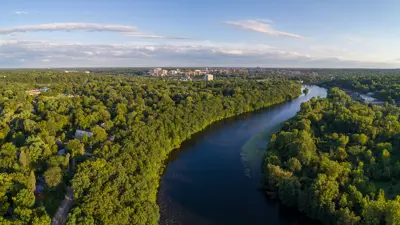Natural History
Mudpuppies live in clean waters and tend to be nocturnal, hiding beneath rocks & other objects. Primarily bottom-walkers, they move into shallow water in spring and fall, but seek deeper water in winter and summer. They feed on crayfish, crustaceans, insect larvae, worms, fish eggs, small fish, carrion, & other amphibians. To better cope with their environment, mudpuppies have sense organs in their skin, which detect motion and pressure changes.
Reproduction and Growth
Mating occurs in the fall when males and females form aggregations in shallow water. The male deposits a spermatophore and female picks it up and stores it until spring. Egg laying occurs in May or early June. Nest cavities are excavated under a rock, log, or board in ½ to 10ft of water. Twelve to over 100 eggs are laid over several days, and incubation takes one to two months, depending on water temperature. Sexual maturity takes 4-6 years and they can live in excess of 20 years.
Conservation
This shy species is often persecuted because of how they look. In recent years the numbers have been reported to be declining in this area. This species is vulnerable to pollutants and changes in water quality. They may also be sensitive to certain chemicals used in Lamprey control.
Habitat Type
-
Ephemeral wetlands.
-
Agricultural areas.




 734.794.6627
734.794.6627


